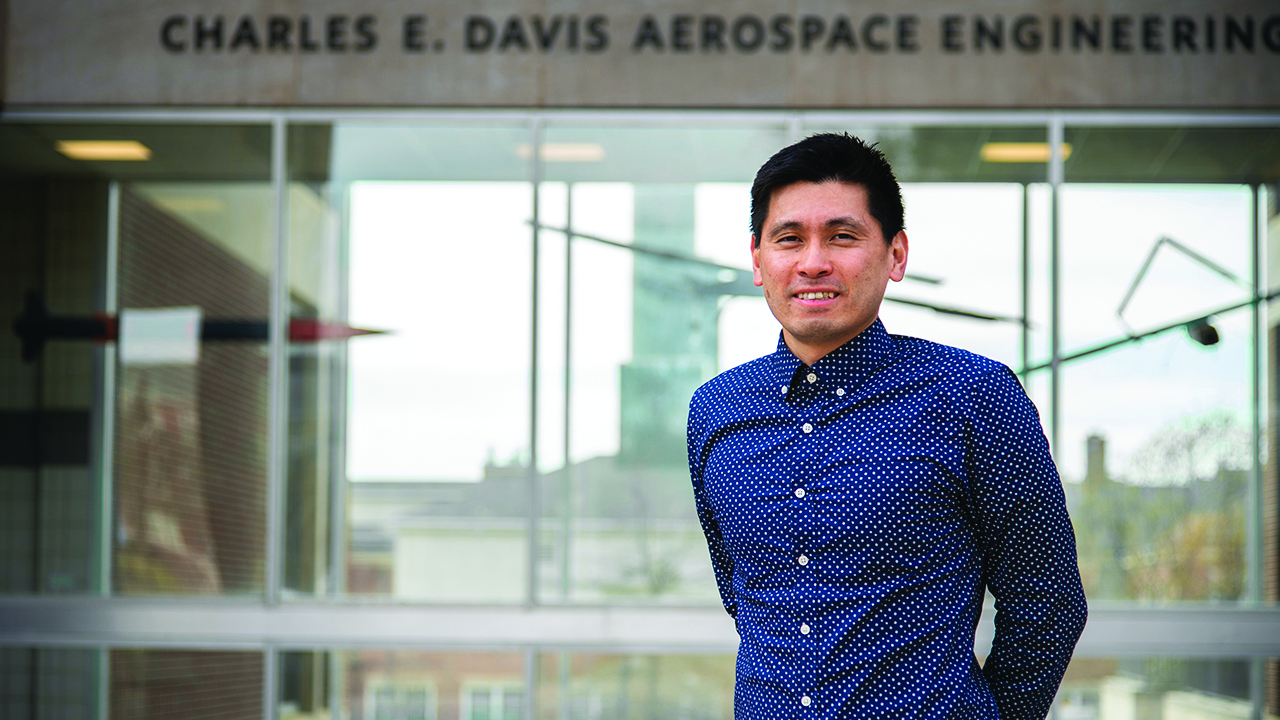Could asteroid strike Earth by 2300? Professor discusses slim chances
Published: Aug 31, 2021 7:55 AM
By Joe McAdory
NASA scientists recently disclosed that asteroid Bennu’s slim odds of striking Earth by 2300 are on the rise. According to a report, Bennu will pass within “half the distance of the moon” in 2135. Masatoshi Hirabayashi, assistant professor in aerospace engineering at the Samuel Ginn College of Engineering, weighed in.
Samuel Ginn College of Engineering: What are the chances of Asteroid Bennu striking Earth and approximately when could the collision occur?
Masatoshi Hirabayashi: According to the recent report, the cumulative impact probability through 2300 becomes 1 in 1,750, and the most significant individual impact solution is for September 2182, with an impact probability of 1 in 2,700.
Samuel Ginn College of Engineering: OSIRIS-REx is a NASA spacecraft, which recently orbited and investigated Bennu. What did scientists learn from the OSIRIS-REx mission that led to updating that estimated date of impact?
Masatoshi Hirabayashi: The major updates of the orbit calculation result from non-gravitational perturbation. Planetary bodies are orbiting the sun under the influence of solar gravity. However, there are also non-gravitational forces affecting their orbits. The report detailed a force acting on Bennu, particularly enhanced by energy input from sunlight. While this force is very small, influenced for a long time, Bennu's trajectory gradually perturbs. This effect is highly affected by the asteroid's thermal condition (surface temperature, topographic conditions). OSIRIS-REx's investigations strongly constrained this condition and updated their orbit model and better characterize the asteroid's orbit evolution.
Samuel Ginn College of Engineering: If an asteroid of Bennu’s size did collide with Earth, what might happen?
Masatoshi Hirabayashi: As the report states, the likelihood of this event is low. Scientists will further collect data of this body to refine their analysis. Therefore, it is critical to note that the following statement does not explain what exactly happens in the future. The discussion below is just telling a hypothetical situation. Let’s compare this with the Chelyabinsk event of 2013. Thousands were injured, mainly by flying window glass shattered by the generated shock waves. However, this event is considered to be triggered by a meteoroid with a size similar to a truck. Bennu, which is roughly 500 meters wide, produces energy of 100,000 times higher than the Chelyabinsk event, which would create a crater with a size of about 10 kilometers. Potentially, this might devastate a major economic hub simultaneously and gradually ruin a wider area by the following effects such as climate change.
Samuel Ginn College of Engineering: What can be done now to prevent such a collision?
Masatoshi Hirabayashi: Scientists and engineers have been making substantial efforts in developing possible deflection technologies. The major milestone will be achieved by the NASA/DART mission (https://www.nasa.gov/planetarydefense/dart). This mission will test a spacecraft’s kinetic impact deflection capability by hitting a DART spacecraft on asteroid Didymos. I am currently a Co-Investigator of this mission and am thrilled to explore this issue.
Masatoshi Hirabayashi is an assistant professor in aerospace engineering, serving as a Co-Investigator of NASA’s Direct Asteroid Redirection Test (DART) mission. He has also contributed to OSIRIS-REx’s science investigations. Hirabayashi investigates space dynamics and engineering at multiscale. He can be reached at thirabayashi@auburn.edu or 334.844.5220
Media Contact: , jem0040@auburn.edu, 334.844.3447
Masatoshi Hirabayashi

